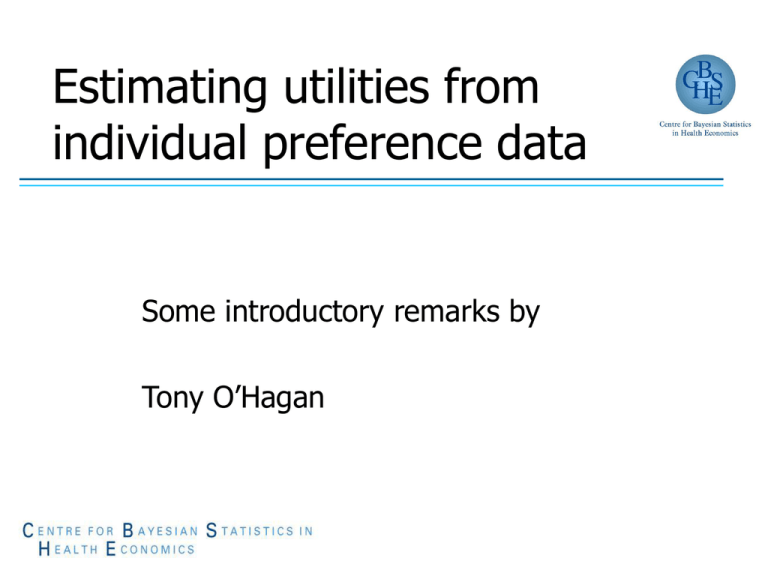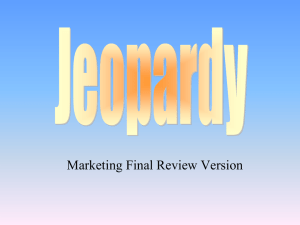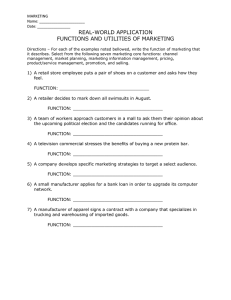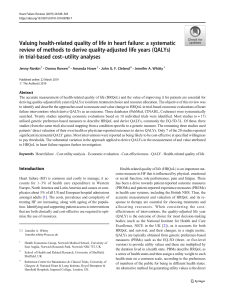Estimating utilities from individual preference data Some introductory remarks by Tony O’Hagan
advertisement

Estimating utilities from individual preference data Some introductory remarks by Tony O’Hagan Welcome! • Welcome to the sixth CHEBS dissemination workshop • This forms part of our Focus Fortnight on “Estimating utilities from individual preference data” • Our format allows plenty of time for discussion of the issues raised in each talk, so please feel free to join in! Health state • Health state is a many-faceted thing • Several descriptive systems exist › EQ5D, SF6D, HUI › disease-specific descriptors • The typical scheme assigns a (discrete) score on each of a number of health dimensions › Scores on each dimension are generally more or less loosely defined Quality of Life • We seek a function that maps the multidimensional health state to a single number › The value to be assigned to a health state is a measure of health-related quality of life (HRQoL) › Perfect health = 1 › Immediate death = 0 › Possibility of states worse than death • This represents the principal utility measure in health economics Utility • In cost-effectiveness analysis of health technologies, the “gold standard” measure of benefit to patients is the QALY • QALYs are utility multiplied by time › One QALY equates to one year of perfect health • Cost-effectiveness analysis using QALYs is often called cost-utility analysis • We won’t discuss here the shortcomings of HRQoL measures and QALYs! Preference data • Data obtained from individuals • Each person values one or more health states › › › › Time trade off (TTO) Standard gamble (SG) Visual analogue scale (VAS) Rankings • TTO, SG and VAS provide numeric values that should be on the utility scale › In practice, this is questionable! Modelling • Statistical modelling is needed to link patient preference data to the underlying utility • Several important issues arise › Individuals make errors of judgement in comparing health states – not necessarily coherent › Errors can’t be symmetric or homoscedastic » Because of the upper limit of 1 › Individuals respond to poor health differently » Especially in regard to states worse than death » Individual-level covariates may be available Whose utility is it anyway? • Variation between individuals raises a more fundamental question • Each person has their own utility function • We want a kind of societal utility function • The relationship between the two is ill-defined › › › › Societal = mean or median individual? Additivity can’t be preserved if we use medians But skewness at the individual level is marked Society should be able to over-rule individuals (e.g. capital punishment) Functional form • The underlying functional relationship between utility and health state could be almost anything › › › › Should decrease in each dimension Various regression models have been fitted Additivity between dimensions is questionable Nonparametric model • Variation between countries Using utilities • Utilities are required in economic models › Need to be able to assign utility to health states arising in model › Need to quantify uncertainty for PSA › Correlation is important (otherwise realisations can be implausible) • Also in analysis of cost-effectiveness trials › Missing data › Need to translate between descriptive systems › Same issues of quantifying uncertainty



